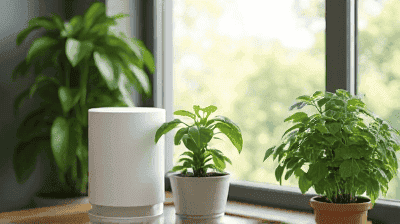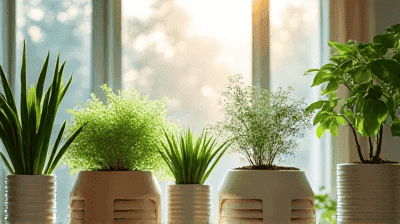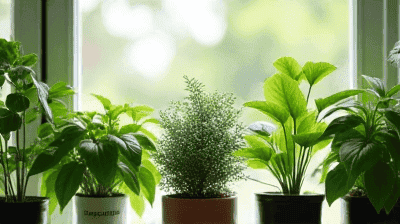
Air quality is a crucial factor that significantly affects our health and well-being. While we often focus on outdoor pollution, indoor air quality can be just as concerning, if not more so. In fact, studies have shown that indoor air can be more polluted than outdoor air, primarily due to various pollutants that accumulate in enclosed spaces.
Indoor air pollution refers to the presence of harmful pollutants in the air inside buildings, homes, and other enclosed spaces. Common sources of indoor air pollution include:
Volatile Organic Compounds (VOCs): These are emitted from various household products such as paints, cleaning supplies, and furniture. VOCs can cause headaches, dizziness, and long-term health issues.
Particulate Matter: This includes dust, pollen, pet dander, and smoke. These particles can aggravate respiratory conditions and contribute to various health problems.
Mold and Mildew: These fungi thrive in damp environments and can release spores into the air, leading to allergic reactions and respiratory issues.
Carbon Dioxide (CO2): High levels of CO2 can accumulate in poorly ventilated spaces, leading to headaches, dizziness, and impaired cognitive function.
Radon: This odorless gas can seep into homes from the ground and is a known carcinogen.
Given the myriad of pollutants that can impact indoor air quality, managing these contaminants is essential for health and well-being.

Air purifiers are devices designed to filter and clean the air in indoor environments. They use various technologies to capture and eliminate airborne pollutants. Here are some key features and benefits of air purifiers:
Filtration Technologies: Most air purifiers use multiple filtration technologies, including:
Air Change Rate: Air purifiers are rated based on their Clean Air Delivery Rate (CADR), which indicates how quickly they can remove pollutants from the air. Choosing an air purifier with an appropriate CADR for the room size is essential for effectiveness.
Noise Levels: When selecting an air purifier, considering the noise level is important, especially for bedrooms or quiet spaces. Many modern air purifiers operate quietly, even on higher settings.
Reduced Allergens: Air purifiers can significantly reduce allergens in the home, providing relief for those with asthma or allergies.
Improved Respiratory Health: By removing particulate matter and harmful gases, air purifiers can help improve overall respiratory health.
Enhanced Sleep Quality: Cleaner air can lead to better sleep quality, as pollutants that cause discomfort or irritation are filtered out.
Elimination of Odors: Air purifiers with activated carbon filters can effectively eliminate cooking odors, pet smells, and other unwanted scents.
Protection Against Pathogens: By capturing bacteria and viruses, air purifiers can help reduce the risk of airborne illnesses.
In addition to air purifiers, indoor plants can also play a vital role in improving indoor air quality. Not only do they add aesthetic value to a space, but many plants have air-purifying abilities. Here are some key points to consider:
Photosynthesis: Plants absorb carbon dioxide and release oxygen through the process of photosynthesis. This natural exchange contributes to a fresher and more breathable atmosphere.
Absorption of Pollutants: Research has shown that certain indoor plants can absorb specific harmful chemicals, enhancing air quality. For example:
Increasing Humidity: Plants release moisture through a process called transpiration. This can increase indoor humidity levels, which can help alleviate dry skin, irritation in the respiratory tract, and contribute to an overall more comfortable living environment.
Stress Reduction: Studies have shown that having plants indoors can reduce stress and improve mood. The presence of greenery can create a calming atmosphere.
Enhanced Creativity and Productivity: Indoor plants have been linked to improved focus, creativity, and overall productivity in workspaces.
Aesthetics and Décor: Beyond their air-purifying capabilities, plants can enhance the decor of any space, adding color, life, and warmth.
Increased Connection to Nature: With urban living becoming more prevalent, incorporating plants indoors can provide a sense of connection to nature, which is beneficial for mental health.

While both air purifiers and indoor plants contribute to improving indoor air quality, they serve different roles and can be used together effectively. Here is how to maximize their benefits:
Air purifiers and plants each target different pollutants and aspects of air quality, making them complementary. For instance, while an air purifier efficiently filters out fine particulate matter and gases, plants can enhance the overall atmosphere, helping to reduce CO2 levels and adding moisture.
To maximize the effectiveness of both air purifiers and indoor plants, consider the following:
Optimal Placement: Place air purifiers in areas with the highest pollution sources, such as kitchens or near appliances that emit VOCs. Indoor plants can be strategically positioned throughout the home to maximize their benefits in various rooms.
Selecting the Right Plants: Choose plants known for their air-purifying capabilities to complement the work of air purifiers. You might consider adding several different types of plants to target a broader range of pollutants.
Maintaining Both: Regular upkeep of air purifiers and plants is essential for optimal performance. Change filters in air purifiers according to the manufacturer's instructions and ensure indoor plants receive appropriate care, including watering and pruning.
To achieve the best indoor air quality outcomes, it is essential to adopt a holistic approach. Here are some additional best practices to enhance indoor air quality alongside the use of air purifiers and plants:
Ventilation: Ensure proper ventilation within your home. Opening windows, using exhaust fans, and circulating fresh air can help dilute indoor pollutants.
Regular Cleaning: Dust and vacuum your home frequently to minimize particulate matter from accumulating. Use a vacuum with a HEPA filter for optimal cleaning effectiveness.
Limit Use of VOCs: Be mindful of the products you use in your home. Opt for low-VOC paints, cleaning supplies, and furnishings to reduce indoor air pollution.
Humidity Control: Maintain appropriate indoor humidity levels (between 30 and 50 percent) to prevent mold growth and enhance comfort. Dehumidifiers can be used in damp areas.
Smoke-Free Environment: Establish a no-smoking policy inside your home to minimize harmful smoke pollution.
Regular Maintenance: Ensure that HVAC systems are regularly maintained and fitted with good quality filters to improve air quality throughout your home.
Improving indoor air quality is essential for maintaining health and well-being in today’s increasingly urban and enclosed living spaces. Both air purifiers and indoor plants offer effective solutions for reducing pollutants and enhancing the overall quality of indoor air. By understanding the functions of each and combining their benefits, individuals can create a more comfortable, healthier living environment.
Incorporating best practices such as regular cleaning, ventilation, and the careful selection of products can further enhance the effectiveness of air purifiers and indoor plants. As we become more aware of the importance of indoor air quality, taking proactive steps to address pollution becomes not just a necessity but an integral part of modern living.